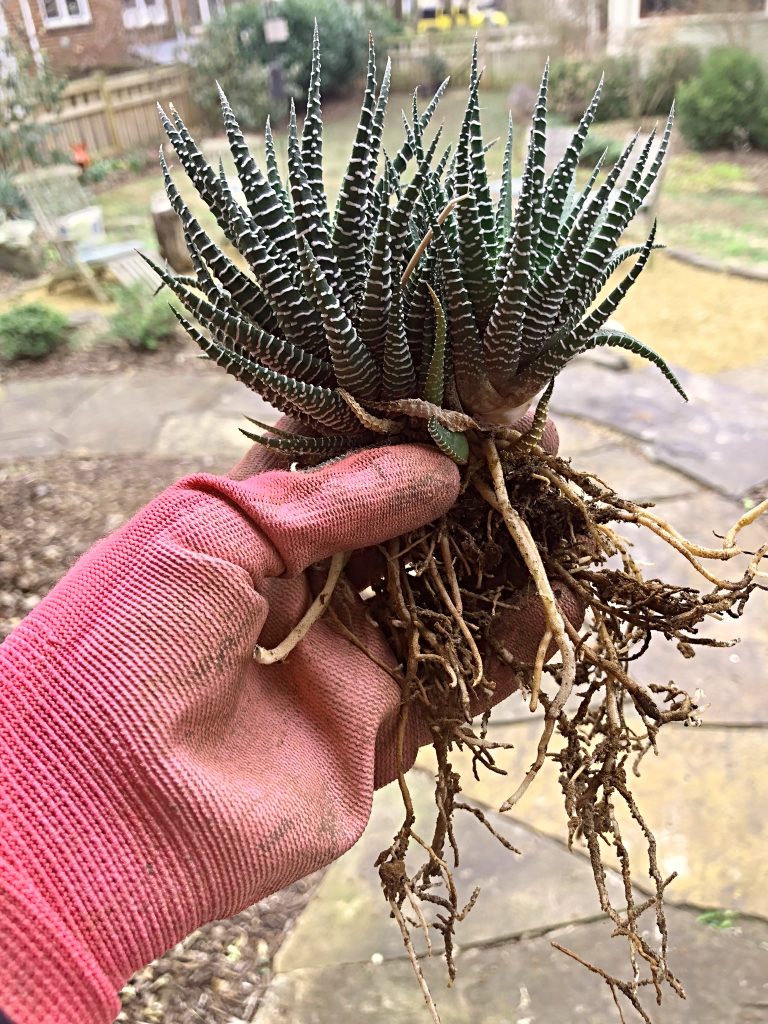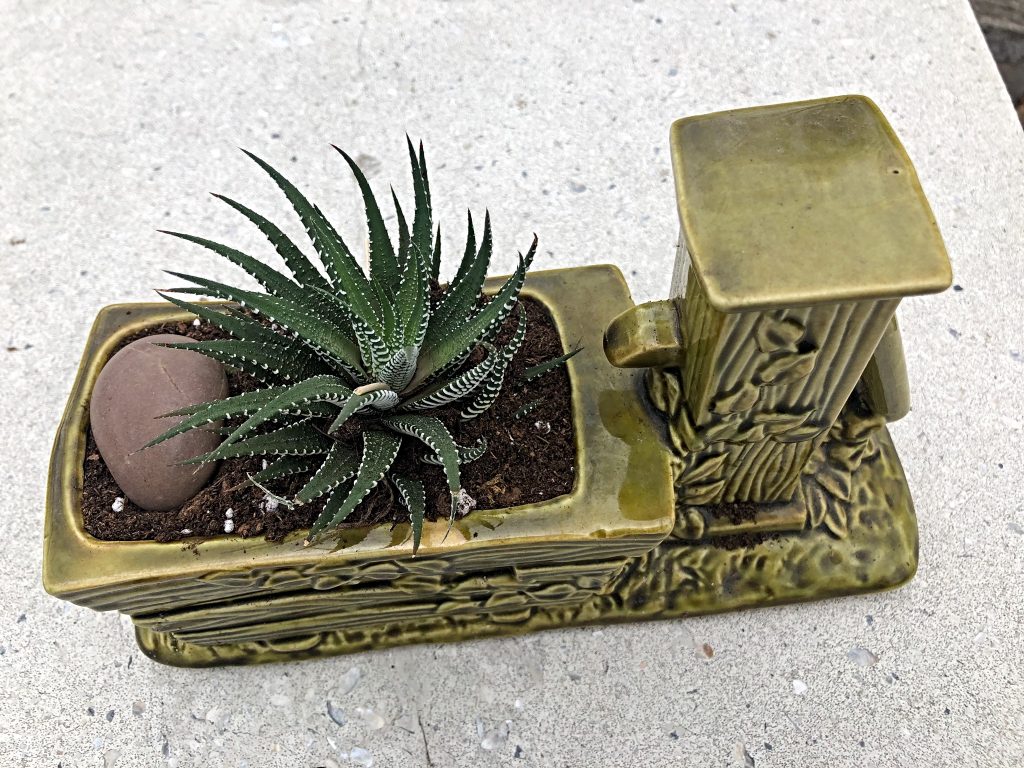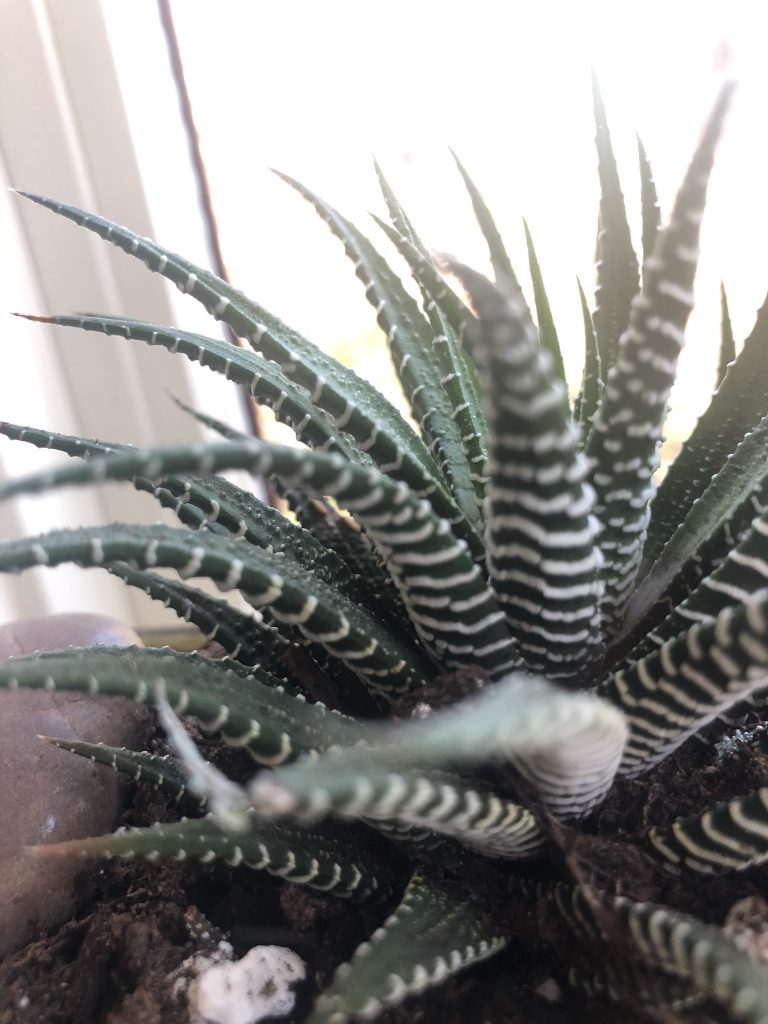Even the blackest of thumbs can successfully grow a zebra plant! These small succulents are very forgiving and rarely complain about anything. Several years ago, I planted one tiny zebra baby in my vintage ceramic planter. Look at her now. She’s bloomed several times and has all but outgrown her container.
A few days ago when it was pouring rain and I couldn’t do any yard work, I scratched my gardening itch by showing my zebra plant a little love.
But first, a story about these ceramic planters. Popular in the 60s and 70s, they were often filled with flowers and delivered to hospitals upon the birth of babies.
My mother received this scottie dog planter when I was born. I often wonder what sort of flowers were inside? Probably carnations, if I had to guess. (And maybe if I searched through my baby book, I could figure it out because Momma saved those little It’s a Girl! cards.) The important thing to note is that somehow Scottie has been in our family for over half a century (gulp), and now he’s one of my favorite pieces of gardening decor.
If I had to evacuate due to fire or flood or famine, I would grab him!
Dividing a Zebra Plant
Removing Ms. Zebra from her home took some urging. She was root bound and hanging on for dear life. I gently loosened her by working a dandelion weeder around the inside edge of the container.
Once freed, I could almost hear her stretch and sigh with relief.
I gave her tangled roots a shake, dumped the old dirt from the container, and gave her fresh new potting soil with a few pebbles in the bottom to aid in draining. (These type ceramic containers have no drainage holes.)
Momma Zebra went back to live in her scottie dog. Her baby, now full-grown, has her own digs in a second planter—a water pump and trough design that once belonged to my mother-in-law.
Kids grow up fast, y’all. But everyone is much happier with room to breathe.
About the Zebra Plant
If you decide to buy a zebra plant, ask for it by its scientific name: Haworthia Attenuata. There are other varieties and cultivars of houseplants with the common name zebra. Some are completely different from this one.
These small succulents grow up to 4 inches tall and like bright light. They are native to South Africa and don’t require much water. In fact, I let the soil dry between waterings.
See the white zebra-striped ridges on the leaves? The name is so on point. Don’t you think? ☺
Are you a succulent gardener? And are you a fan of funky, vintage containers? You can pick up some really cool ones at yard sales and flea markets if that’s your sort of thing!
Grace Grits and Gardening
Farm. Food. Garden. Life.












Your Scotty planter is sweet and it’s so nice that you still have it. I wonder what happened to mine? My memory of those little planters delivered to new mothers is that they were filled with philodendron plants. My memory isn’t the greatest so who knows?
That may be! Who knows?
I think there’s one of these in a pot of succulents that suffers under my care. I remember and love those planters.